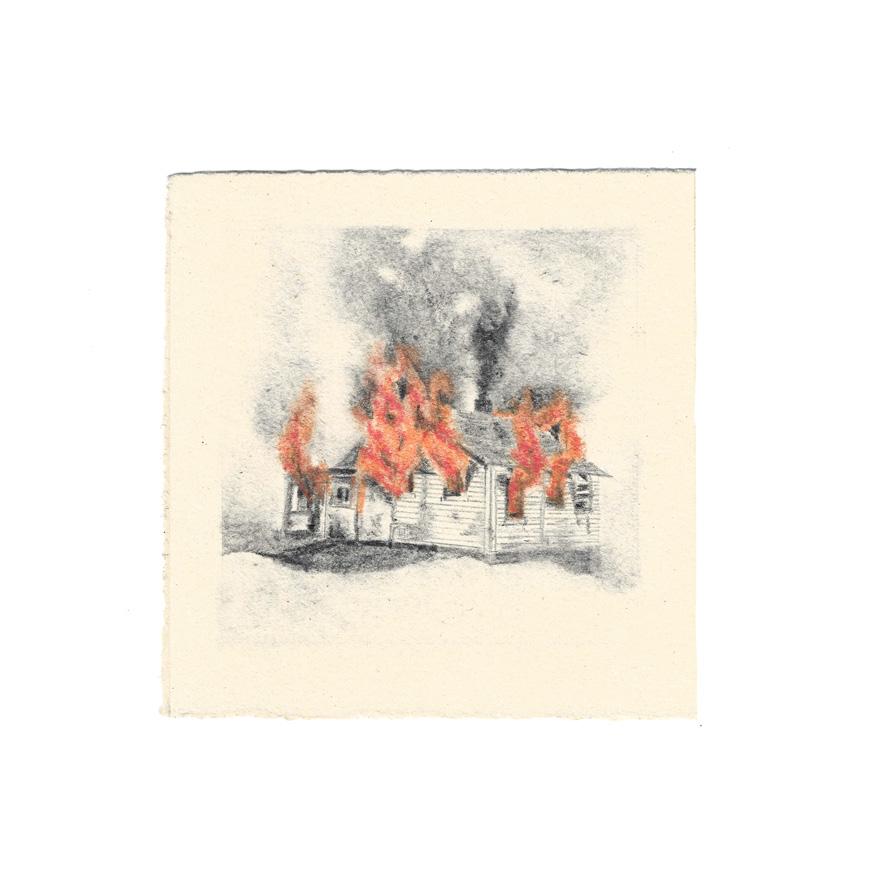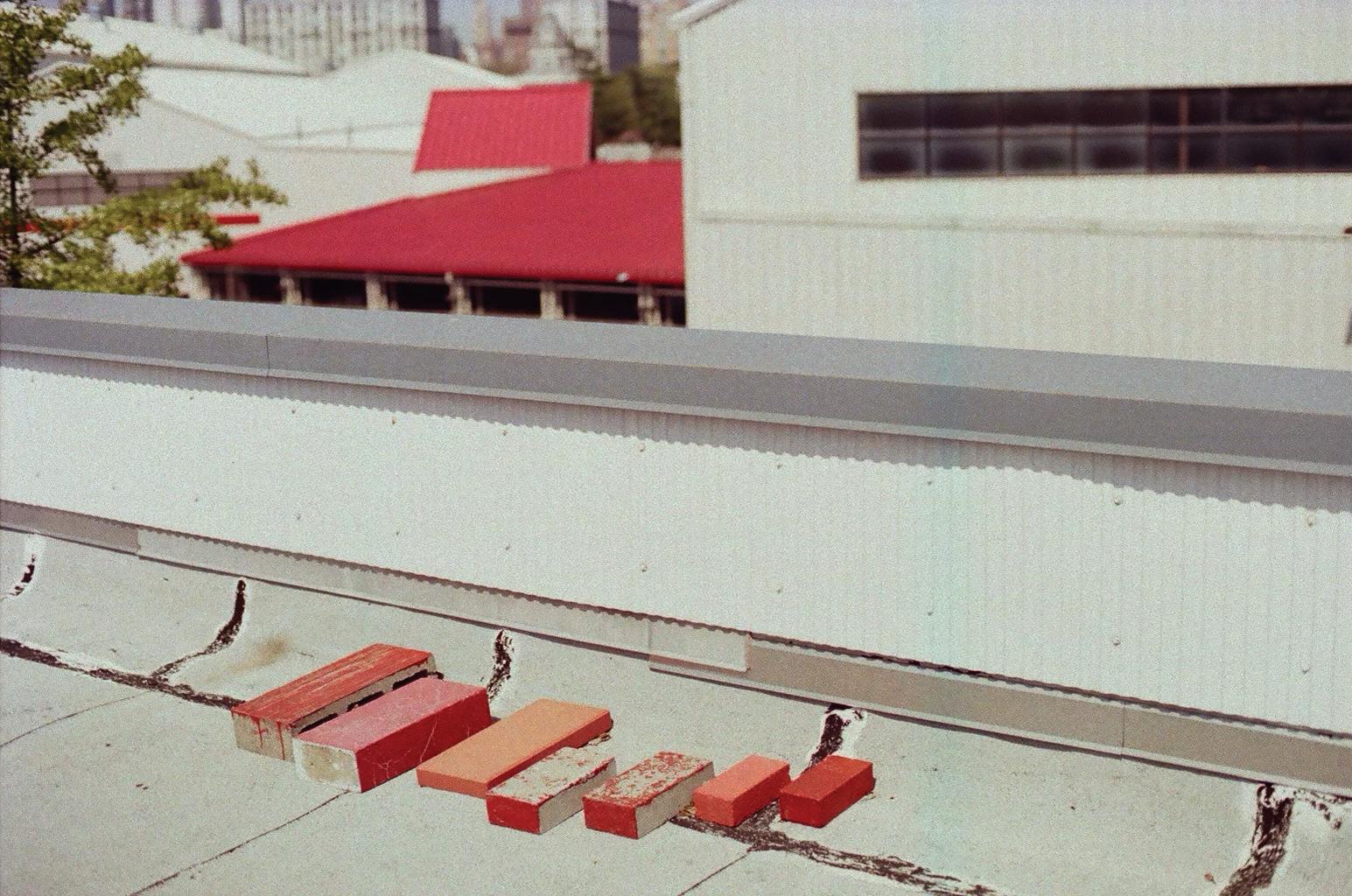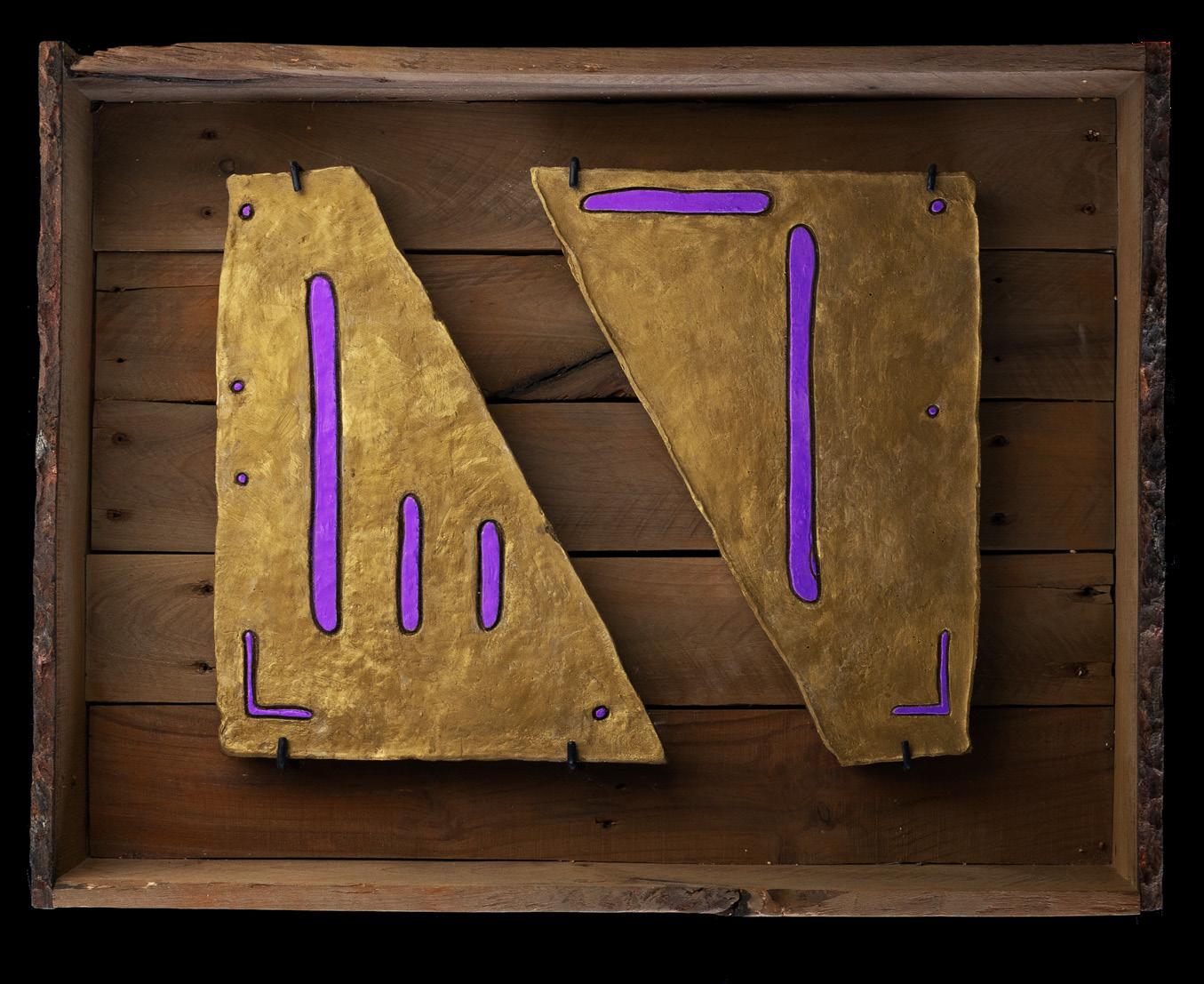
4 minute read
A Living Mechanism
Orlando Lacro and Shamysia Waterman Curators
From the depth of time-consuming hardness to find the lasting and essential, by using modern tools on the oldest medium, there is an attempt to push the discovery of sculpture onward a notch.
What inner workings in your life deserve a moment to shine?
Believing in a collective effort throughout his entire career, Isamu Noguchi’s widespread artistic endeavors ranged from interning under Constantin Brancusi, to creating set designs for Martha Graham, to designing furniture with Herman Miller, and so on. As The Noguchi Museum came into creation there were many figures that were in the process like Shoji Sadao and Masatoshi Izumi, just to name a few. Even during the later years of Noguchi’s life he became reliant on his right hand man and carving assistant, Masami Sasao, as well as Priscilla Morgan, personal manager of Noguchi who guided some of his best business decisions.
When the opportunity to create A Living Mechanism presented itself, the goal was to draw inspiration from The Noguchi Museum’s mission to remain a place for the exploration of individual artistic endeavor and creative collaboration through exposure to Noguchi’s wide-ranging practice. As two frontfacing staff curate the exhibition, there is a desire to remain current by listening and giving space to those that help support The Noguchi Museum’s existence. The conceptual approach became The Noguchi Museum as a sculpture itself, with its staff as the instruments that transform the work into a beautiful art piece. The instrument is in symbiosis with the art piece itself, much like the staff are an ineffable part of the museum.
Barbara Leven
Statement
Since childhood, I have sought to create images and avidly studied art. Photography is my preferred medium. Through the viewfinder, I look for things I have never seen before; to see the significance and beauty in the ordinary, and the spiritual in the material.
Photography is like collecting. Only I am collecting images of nature, urban dilapidation, vibrant streets and people and more recently the city’s growing monumental architecture.
Bio
Leven has won awards including a First Place–Outstanding Achievement Award In Nature from the Photography Masters Cup in 2011, a First Place in “Botanicals” from Light Space and Time Art Gallery in 2015, and was shortlisted in the Sony World Photography Awards Professional Category Nature and Wildlife in 2012. Her work is also represented in the collections of The Metropolitan Museum of Art, New York City; and The Cincinnati Art Museum, Cincinnati, Ohio.
barbaraleven.com bleven48@gmail.com
Queensboro Bridge
Archival pigment print on Epson
Velvet Fine Art Paper iPhone 13 Pro 16 x 12 in. (24 x 20 in. framed)
$1100
Cayla Blachman STATEMENT
The fire series contemplates the destruction of the familiar, and through sumptuous materiality, its beauty, as well.
Bio
Cayla Blachman is a multidisciplinary artist working primarily in drawing and painting. Their work examines ideas of home, the body and the self, breaking these down into fragments. In doing so, they analogize our experiences with these concepts to moments, places, ecologies, and emotions. Working with traditional media such as charcoal and oil paint, they draw from this experience of selfhood, negotiating with the various vessels and structures that contain ( hold ) us. Caught between nostalgia, obscurity, and intimacy, Blachman dissociates the viewer from the subject, at once drawing them in, in pursuit of some greater evocation.
Cayla Blachman earned their BA in Studio Art and Art History from Wesleyan University in 2019. Originally from Los Angeles, they have been based in New York City since graduating. They currently work at The Noguchi Museum and Alison Bradley Projects, in addition to their studio practice and freelance art writing.
cayla.blachman@gmail.com @cayla.bb fire (i), fire (ii), fire (iii), fire (iv) Charcoal and pastel on paper, framed 16 x 16 in.



$250 each or $900 for the set

Statement
Found objects in this room tell a part of that story from the shop-bought postcards that are returned to us when they cannot be delivered (maybe one day yours will end up back here) to the chemical canister that was found in the walls dating back to when the building was a photo engraving plant in the 1930s.
You are welcome to take one of the pieces of paper associated with this piece. You will see a list of ambiguous clues about the museum’s folklore and will need to ask staff to find the location. A portion of these are for staff only and exist in locations that are not available to the public. Some staff members will know the history, some will know nothing, some will be able to recount first hand experiences while others may give inaccurate information based on multiple retellings. This piece was compiled through the accounts of many staff members and cannot be credited to one person.
Unarchived Museum Objects

Danielle Draik
Bio
Danielle Draik is a multimedia, traditional artist born and raised in Queens, NY. Heavily laden in the occult, Danielle’s focus is on the idea of “high strangeness,” paranormal occurrences, folklore, the idea of interdimensional consciousness and how these themes culturally permeate everyday life. Developing a visual language of basic shapes and light reactive materials, their work operates as a changing tool for communication; an inherent sentience in an object that moves and follows an interpretive narration.
They received their BFA from SUNY FIT in Fine Arts with a focus on sculpture.
danielledraik.com
@artofddraik dmc_finearts@yahoo.com
Instructions (Five and Six) Acrylic on plaster slab, cradled in reclaimed wood

18.25 x 23.5 in.
Price upon request
Harumi Ori STATEMENT
For nearly 21 years, I've been working on a sculpture series that reproduces the space and time of a single moment, titled I am Here. Each piece begins the same way: observing my “living subject,” capturing the scene, and flattening it through photography. Next, these moments are translated into sculpture using an industrial plastic mesh in orange, a holy color in my native country of Japan. This unusual material creates a beautiful effect. Layered folds convincingly render the shape and volume of people and their surroundings, and as the pieces come together, the connections between individuals and groups, and the streets, buildings, and landscapes they pass through and share, are further revealed. It is the beauty of these relationships that I wish to express the unique and sacred significance of singular moments, and the space each one “owns.” When the pieces are finished, they are titled with the place, exact time, and date of the moment captured.
Bio
Harumi Ori was born in Kyoto, Japan. Ori moved to New York in 1999 to study at the School of Visual Arts. Her sculptures, based on photographs she’s taken at various public sites, deal with themes of time, existence, and diversity. Ori has had several solo shows at the Karuizawa New Art Museum; Whitestone Gallery, Japan; Artup, New York; Ise Cultural Foundation, New York; and the Queens Museum of Art. She has completed numerous artist residencies and her work is included in the permanent collections of Facebook and MetLife. Her work has been highlighted by the New York Times, Casa Brutus, and on NY1. Ori lives in Brooklyn, NY.









